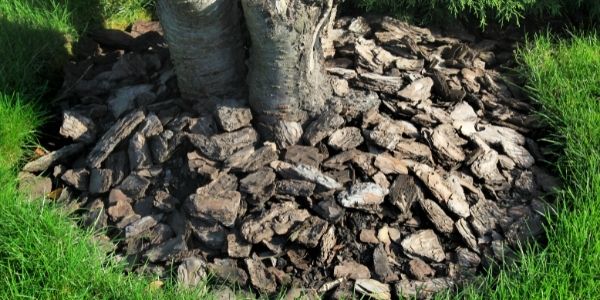Tending to the grass in your lawn can be quite the task, especially for grass found under trees and shrubbery. Instead, you may enjoy using evergreen moss, artificial turf, perennial beds, chamomile, gravel, bark, or slate chippings as alternatives to grass under trees.
Evergreen Moss
Evergreen moss survives and thrives year-round, making it an easy addition under your trees with minimal maintenance required. It will have no problem withstanding the shade of your trees and it grows in almost any type of soil.
You can purchase your evergreen moss in clumps or a carpet-like style. Different species of moss can also bring out your interior designer, as the green shade options are endless to create the lush look your yard is going for.
Artificial Turf
Artificial turf, more crudely referred to as fake grass, will give you the look and feel of grass without any of the worry. Long gone are the days of fretting over frost or setting up the sprinkler.
With artificial turf, you can plant enough expanse to cover the complete underside of your tree. While you will need to keep it moist for the first 28 days, after this period most turf will be established enough to take care of itself and keep looking green and great on its own.
Perennial Beds
A native perennial bed is another way to spruce up the look under your trees while promoting your local ecosystem. These plants are adapted to the soil, temperatures, and humidity in your area, which makes their survival an easy task.
Since there are so many options of perennials depending on where you live, it’s recommended to go to your local nursery and ask the staff for recommendations on perennial beds that require minimal pruning and upkeep.
Some perennials which enjoy shade include the purplish-leafed ligularia, large-leafed hostas, or the tall flowered aconitums.
Chamomile
Chamomile is a fragrant plant that grows in spring shapes near the ground. With a vibrant green that shines in spring and summer, you’ll also enjoy the fruity smell of this grass replacement when near your garden’s trees.
Chamomile is great to plant in areas that aren’t stepped on often, such as under trees or shrubs. They do require some sunlight, so this is best used to replace grass under individual trees that are surrounded by open space or low-lying plants.
Gravel
Gravel is an excellent choice for suppressing weeds while adding style to your yard. To ensure low maintenance, it’s recommended to add a membrane under the gravel. This will prevent any weeds from growing between the gravel pebbles, leaving you with a refined look that you can sit back and enjoy.
Bark Chippings
Bark chippings are often used for play areas or mulch, but they also make a great replacement for grass in landscaping designs. Ideal for smaller areas, bark chippings require little attention and come in a range of colors for all styles.
Lay your bark chippings about 5-10cm deep over landscape fabric and opt for an FSC-approved brand if you’re creating an eco-friendly garden.
Slate Chippings
For a modern take on chippings, look no further than slate. This textured alternative to grass is heavier and less animal-friendly than bark, which may keep your lawn more pristine than your neighbor’s.
You can find slate chippings in green, plum, graphite, and blue shades, as well as different sizes, depending on whether you plan to walk on them or not.



